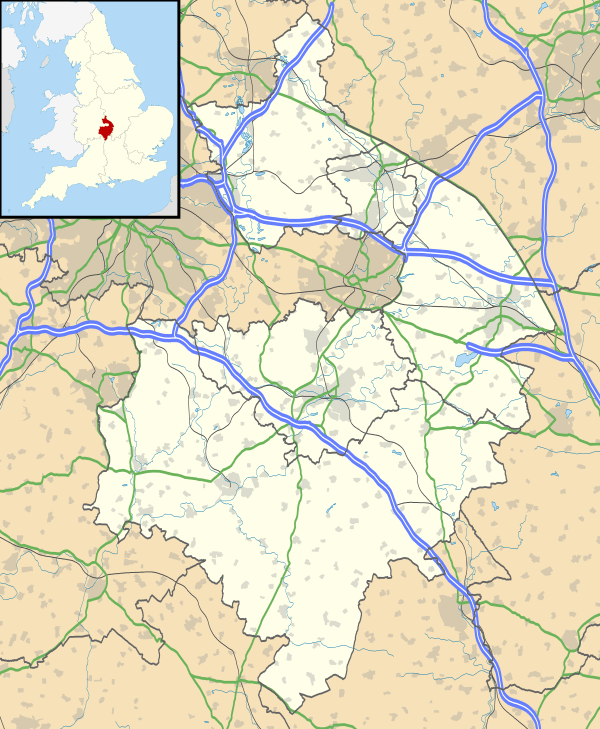Rugby Radio Station
|
A view of the tallest masts | |
 | |
| Location | Hillmorton, Rugby, Warwickshire |
|---|---|
| Mast height | 250 metres (820 ft) |
| Coordinates | 52°21′57″N 1°11′21″W / 52.3658°N 1.1893°WCoordinates: 52°21′57″N 1°11′21″W / 52.3658°N 1.1893°W |
| Grid reference | SP5519574542 |
| Built | 1926 |
| Demolished | 2007 |
Rugby Radio Station was a radio transmission facility at Hillmorton near the town of Rugby, Warwickshire in England, situated just west of the A5 trunk road and in later years junction 18 of the M1 motorway. Its large very low frequency (VLF) transmitter came into service on 1 January 1926 and was originally used to transmit telegraph messages to the Commonwealth as part of the Imperial Wireless Chain. After the 1950s this transmitter, active as callsign GBR on 16.0 kHz, using Morse code and later on 15.975 kHz with frequency-shift keying FSK and minimum-shift keying MSK, was used for transmitting messages to submerged submarines. Criggion radio station acted as a reserve. The GBR transmitter was shut down on 1 April 2003 and was replaced by a new one at the Skelton transmitting station.
In 1927, a second transmitter was installed to initiate the first transatlantic commercial telephone service; linking New York and London[1] on 60 kHz using single-sideband modulation. This transmitter was decommissioned in 1956 and became the time signal transmitter MSF. This new function developed from the decision, in 1951, to use the station to transmit modulated standard frequencies for scientific reference purposes. In 1972 these transmissions were consolidated onto the present frequency of 60 kHz and a further reference, that of a time signal, was added. In 1977 this took the form of the rolling slow code in use until April 2007, when BT's contract to transmit the time signal also passed to VT Communications, using their Anthorn radio station in Cumbria.
The aerial system at the VLF transmitter existed between 1926 and 2004 and consisted of twelve 250 metre (820 ft) high, guyed steel-framework masts insulated against ground and carrying an aerial wire. This wire was mainly destroyed by heavy iceloads in the winter of 1940. After the shutdown of GBR, the facility was only used for transmitting the MSF time signal. Therefore, eight of the twelve masts were obsolete and demolished on the night of 19 June 2004 to 20 June 2004.
The remaining four 'tall' masts were demolished on 2 August 2007. Most of the majority of the smaller masts still stand awaiting demolition before becoming an industrial estate
A trial transmission of the LORAN-C navigation system was run at the station from June 2005 until March 2007.


See also
- List of masts
- List of tallest buildings and structures in Great Britain
- List of radio stations in the United Kingdom
Notes
External links
- A History of Rugby Radio
- The Official History of Rugby Radio Station
- National Physical Laboratory – news of the MSF Move
